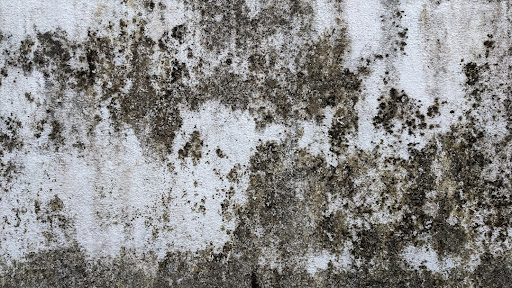Outdoor mould is a common issue, especially in humid climates. It can damage property and pose health risks.
But how can you effectively remove and prevent it?
This guide provides six practical tips for outdoor mould removal. It also explores the role of steam cleaners in this process.
Steam cleaners have gained popularity for their ability to kill mould spores with high temperatures. But do they really help in outdoor mould removal? We’ll delve into this question, providing insights for homeowners, property managers, and DIY enthusiasts.
Whether you’re dealing with a minor mould issue or seeking professional mould removal services in Sydney, this guide is for you. Let’s get started.
Understanding Mould and Its Risks
Mould is a type of fungus that thrives in damp, humid conditions. It spreads quickly on outdoor surfaces.
This could include walls, decks, and even your garden furniture. But why is mould such a concern?
Exposure to mould can lead to a range of health issues. Individuals may experience allergies, respiratory problems, or more severe reactions. This is particularly true for those with pre-existing health conditions. In addition to health risks, mould can also damage structures.
If left untreated, it can compromise the integrity of wooden surfaces and other materials. It’s crucial to tackle mould issues promptly. Prevention is key. Knowing where and why mould forms helps you take proactive steps to manage it. Here are some typical mould-friendly environments:
- Areas with poor drainage
- Spaces with high humidity
- Shaded spots with limited sunlight
Armed with this knowledge, you can better protect your outdoor spaces from mould.
Tip 1: Regular Inspections to Detect Mould Early
Regular inspections are vital in catching mould problems before they escalate. Routine checks allow you to spot mould in its early stages. Start by examining high-risk areas around your property. Focus on spots prone to moisture and shade, as mould loves these conditions.
Look for discoloration or musty smells. These are often early indicators of mould growth. Early detection is your best defence. Once you detect potential mould, act swiftly. The quicker you address it, the easier it is to prevent spread. Identifying mould early helps safeguard both your health and your property.
Tip 2: Improve Drainage and Reduce Moisture
Effective drainage is crucial in preventing outdoor mould growth. Poor drainage can lead to water pooling, which creates an ideal environment for mould. Assess your property for areas where water accumulates and address these promptly.
Consider installing gutters or adjusting the landscape’s slope to guide water away from structures. Additionally, ensure gutters and downspouts are clear of debris. This helps water flow freely and decreases the chance of mould-friendly dampness.
Reducing moisture in outdoor areas involves more than just drainage improvements. Regularly check for leaky faucets or hoses and repair them immediately. These small steps can greatly reduce moisture levels. Keep an eye on humidity levels and consider using dehumidifiers in enclosed spaces if necessary.
Tip 3: Landscaping and Garden Maintenance
Proper landscaping and garden maintenance can significantly reduce the risk of mould. Pruning overgrown plants helps improve airflow, reducing humidity and mould growth. Keep trees and bushes trimmed to ensure sunlight reaches damp areas.
Mulching your garden can also play a role. Use organic mulch, but avoid thick layers that can trap moisture near the roots. Thin layers allow the soil to breathe while providing essential nutrients.
Regularly remove fallen leaves and debris from your garden. These materials can trap moisture, creating an ideal environment for mould. A clean garden fosters a healthy, mould-free landscape.
Tip 4: Cleaning and Maintenance Routines
Maintaining a regular cleaning schedule is crucial for outdoor mould prevention. Clean surfaces like decks, patios, and walls to remove dirt and debris that can harbour mould spores. This ensures a tidy environment less prone to mould growth.
Make it a habit to inspect and clean outdoor furniture, such as chairs, tables, and cushions. These items are often exposed to moisture, making them susceptible to mould. Dry them thoroughly after cleaning to prevent mould infiltration.
Always check your gutters and downspouts for blockages. Clogged systems lead to water overflow, promoting mould growth on walls and foundations. Consistent upkeep keeps mould at bay.
Tip 5: Use Protective Coatings and Mould-Resistant Products
Applying protective coatings can greatly reduce outdoor mould issues. These coatings form a barrier, preventing moisture from penetrating surfaces. Thus, mould finds it harder to take hold.
Consider using mould-resistant paints for fences, walls, and decks. These products contain additives that deter mould growth, extending the life of your outdoor structures. They are especially useful in damp or humid climates.
Opt for treatments with eco-friendly components. These are less harmful to the environment while still effective in mould prevention. Always follow manufacturer guidelines when applying such products for the best results.
Tip 6: Professional Mould Removal Services
Sometimes, tackling outdoor mould requires expert intervention. Professional mould removal services offer thorough inspections and solutions tailored to specific situations. This can be crucial in severe cases or when mould keeps coming back.
Experts have the tools and knowledge to identify mould types and sources effectively. They use advanced techniques that ensure comprehensive mould eradication. Plus, professionals can treat areas that are difficult to reach for a non-professional.
Hiring mould removal services can save time and effort. It provides peace of mind knowing the job is done right. In areas like Sydney, many reputable companies offer these services. Always verify credentials and reviews before choosing a provider.
The Role of Steam Cleaners in Mould Removal
Steam cleaners are increasingly popular for removing outdoor mould. These devices use high temperatures to kill mould spores effectively. They’re especially helpful on hard surfaces like tiles or bricks.
One key benefit is chemical-free cleaning. This appeals to those seeking eco-friendly options for mould removal. The absence of harsh chemicals also minimises damage to surfaces.
However, steam cleaners have their limitations. They may not penetrate porous surfaces where mould hides deeply. It’s crucial to understand when and where to use them effectively.
To maximise efficiency, consider these tips for steam cleaning:
- Ensure the surface can withstand high temperatures.
- Use the right attachments for targeted cleaning.
- Follow safety precautions like wearing gloves and goggles.
Steam cleaners can be a valuable tool in your mould removal arsenal. They offer a balance between effectiveness and eco-friendliness, especially for specific outdoor tasks.
When to Call in Mould Removal Sydney Experts
Professional mould removal services are valuable for severe infestations. They offer expertise and equipment not available to most homeowners. If DIY efforts fail, it’s time to consider calling in specialists.
Mould removal Sydney experts can effectively address deeply embedded mould. They also help prevent recurrence, ensuring long-term solutions for your outdoor spaces.
Conclusion: Balancing DIY and Professional Mould Remediation
Effectively addressing outdoor mould involves a mix of DIY methods and professional help. By employing steam cleaners and other preventative measures, you can manage small infestations on your own.
For larger issues, expert services ensure a thorough and lasting solution, preserving the health and integrity of your outdoor spaces.

